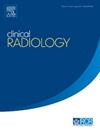局部治疗和免疫治疗时代软组织肿瘤的成像与干预。
IF 1.9
3区 医学
Q2 RADIOLOGY, NUCLEAR MEDICINE & MEDICAL IMAGING
引用次数: 0
摘要
作为多学科团队的一部分,临床放射学在软组织肉瘤(STS)和硬纤维瘤(DTs)的诊断、分期和治疗反应评估中起着关键作用,通常使用超声和磁共振成像(MRI)模式的组合。在这些肿瘤类型的复发性和少转移性疾病的治疗中,介入放射学的作用越来越大。本临床放射学综述主要针对非专业的横断面放射科顾问医师和更多对肌肉骨骼肿瘤学有特殊兴趣的初级放射学顾问/专科实习生。本文概述了F-18氟脱氧葡萄糖(FDG)正电子发射断层扫描/计算机断层扫描(PET/CT)和MRI在评估STS和DT治疗反应方面的现有作用,包括全身MRI的新作用。反应指标包括实体肿瘤反应评价标准1.1 (RECIST 1.1)、修正的RECIST、实体肿瘤正电子发射断层扫描反应标准(PERCIST)、实体肿瘤免疫反应评价标准、iPERCIST和非灌注容积比。我们介绍了局部区域治疗(LRTs)的潜在作用,包括微波,冷冻疗法和基于治疗性超声的治疗,作为当前英国指南中选定病例的辅助治疗。我们讨论了高强度聚焦超声和其他lrt系统释放肉瘤肿瘤抗原的潜力,并具有增强抗肿瘤免疫的潜力(“抽离”效应)。随着局部区域治疗(LRTs)的适应症和可用性的增加,以及针对特定亚型STS的免疫治疗的第一个适应症,STS和DT的功能成像能力的潜在未来方向也进行了讨论。本文章由计算机程序翻译,如有差异,请以英文原文为准。
Imaging and intervention for soft tissue tumours in the era of locoregional therapies and immunotherapy
As part of a multidisciplinary team, clinical radiology plays key roles in the diagnosis, staging and treatment response assessment for soft tissue sarcoma (STS) and desmoid tumours (DTs), typically using a combination of ultrasound and magnetic resonance imaging (MRI) modalities. There is an increasing role for interventional radiology in the treatment of recurrent and oligometastatic disease in these tumour types. This clinical radiology review is aimed primarily at non-specialist cross-sectional consultant radiologists and more junior radiology consultants/specialist trainees with a special interest in musculoskeletal oncology.
The existing role of F-18 fluorodeoxyglucose (FDG) positron emission tomography/computed tomography (PET/CT) and MRI for assessment of treatment response in STS and DT, including the emerging role of whole-body MRI is outlined. Response metrics including Response Evaluation Criteria in Solid Tumors 1.1 (RECIST 1.1), modified RECIST, Positron Emission Tomography Response Criteria in Solid Tumours (PERCIST), immune Response Evaluation Criteria in Solid Tumors, iPERCIST and non-perfused volume ratio are also discussed in context.
We introduce the potential role for locoregional therapies (LRTs), including microwave, cryotherapy and therapeutic ultrasound-based treatments as adjunctive treatments for selected cases within the current UK guidelines. We discuss the potential of high intensity focused ultrasound and other LRTs to release sarcoma tumour antigens systemically with the potential to enhance anti-tumour immunity (the ‘abscopal’ effect).
With increasing indications and availability of locoregional therapies (LRTs) and the first indications of immunotherapy for selected subtypes of STS, potential future directions in functional imaging capability for STS and DT are also discussed.
求助全文
通过发布文献求助,成功后即可免费获取论文全文。
去求助
来源期刊

Clinical radiology
医学-核医学
CiteScore
4.70
自引率
3.80%
发文量
528
审稿时长
76 days
期刊介绍:
Clinical Radiology is published by Elsevier on behalf of The Royal College of Radiologists. Clinical Radiology is an International Journal bringing you original research, editorials and review articles on all aspects of diagnostic imaging, including:
• Computed tomography
• Magnetic resonance imaging
• Ultrasonography
• Digital radiology
• Interventional radiology
• Radiography
• Nuclear medicine
Papers on radiological protection, quality assurance, audit in radiology and matters relating to radiological training and education are also included. In addition, each issue contains correspondence, book reviews and notices of forthcoming events.
 求助内容:
求助内容: 应助结果提醒方式:
应助结果提醒方式:


